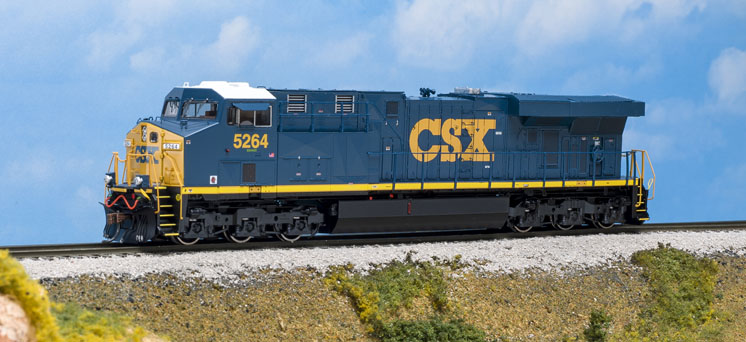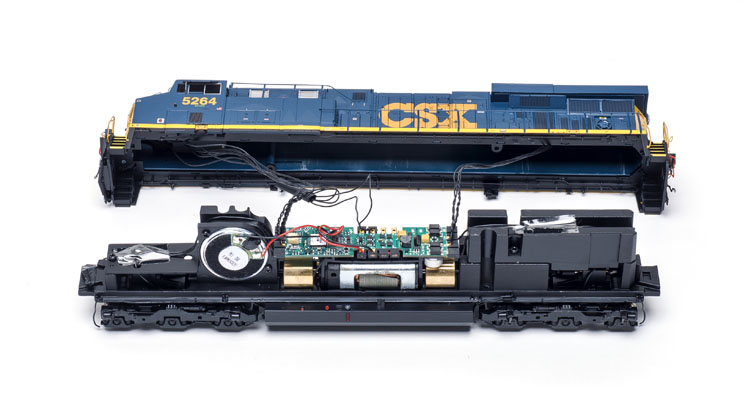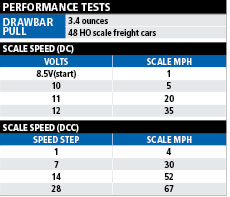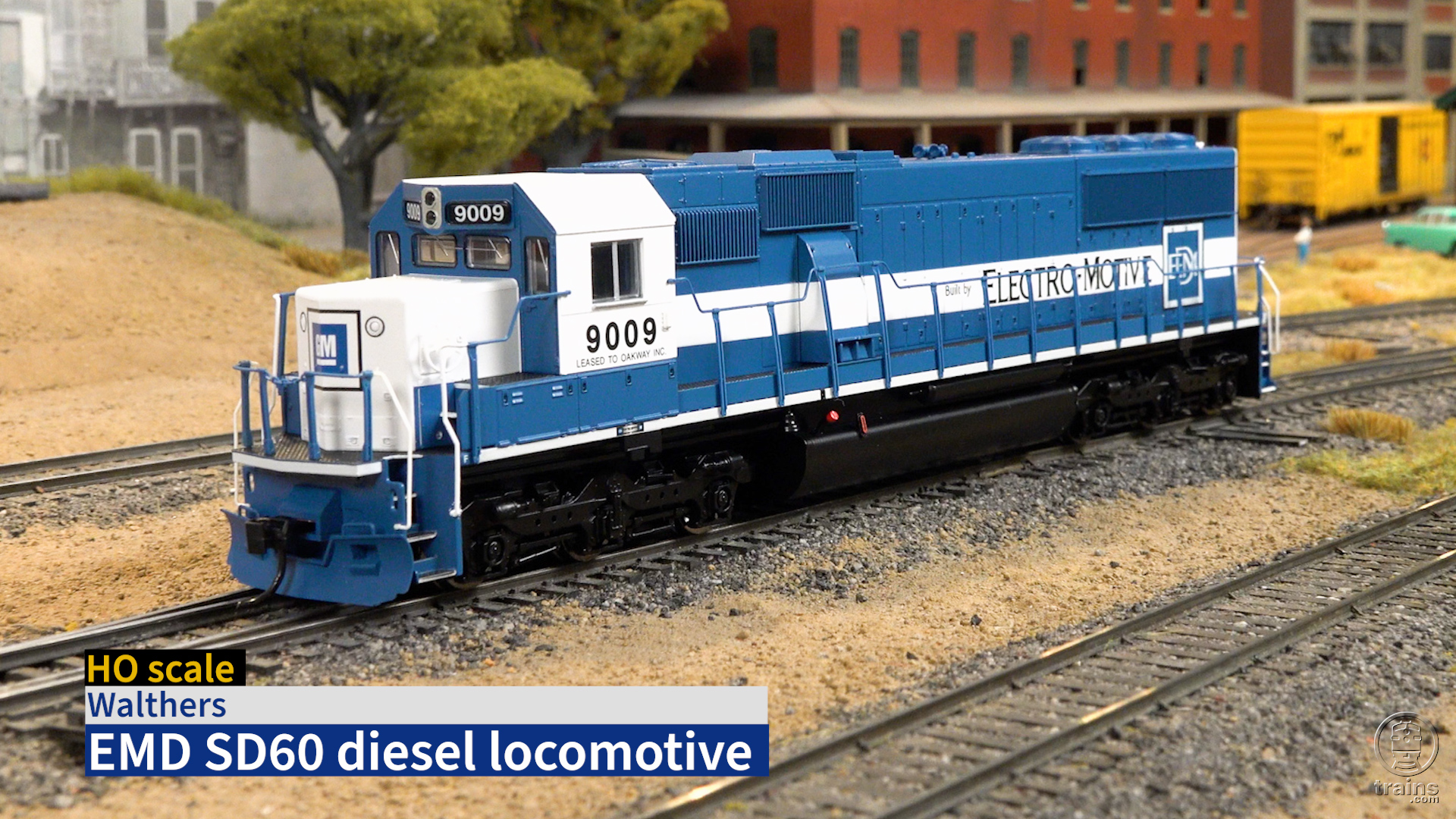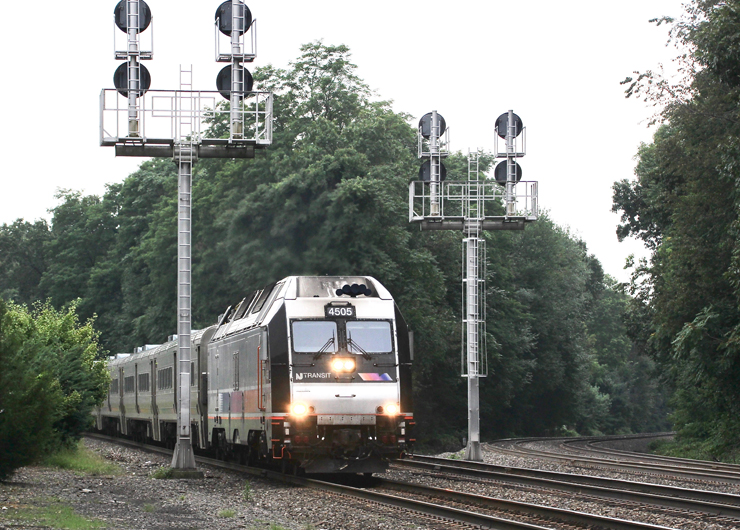The prototype. When General Electric began producing its new Evolution Series (GEVO) locomotives in 2004, most of the units were built with alternating-current (AC) traction motors and designated ES44AC. Recognizing that some railroads wanted a lower-cost direct-current (DC) traction motor option, GE also developed the ES44DC. Both versions use the same 4,400 hp GEVO-12 diesel engine.
In North America, BNSF Ry., Canadian National, and CSX purchased ES44DCs. Norfolk Southern ordered its DC GEVOs with 4,000 hp prime movers. These units were designated ES40DC but were externally identical to an ES44DC. In 2009, CSX began derating its ES44DCs to 4,000 hp.
The model. As did the earlier Athearn ES44AC release, the ES44DC’s dimensions match the prototype. The main detail difference between the AC and DC versions is the arrangement of the electrical cabinet hatches and panels behind the cab on the conductor’s side.
The model’s plastic body shell features well-defined access doors, grills, and other molded detail. The end of the long hood also correctly features an end access door and low-mounted sand filler. In addition to the horn, handrails, and grab irons, the model bristles with superdetail parts. These include lift rings, m.u. hoses, and windshield wipers.
Although crew figures aren’t included, the cab interior is fully detailed, including a cab camera and three crew seats.
The position of the headlights and number boxes on the Athearn ES44DCs are roadname-specific. Our CSX sample correctly features nose-mounted headlights and number boxes.
On our CSX sample, the paint is smoothly applied and matches prototype photos. All lettering is properly placed. Especially impressive are the numerous small warning and maintenance stencils. Athearn even included the American flags on the corners of the cab sides.
To remove the shell and reveal the Genesis-series mechanism, I removed the couplers and two additional screws, one on each end of the fuel tank. The only change from the earlier release is the SoundTraxx Tsunami2 dual-mode decoder mounted above the motor.
DCC operation. On our DCC test track, the ES44DC accelerated smoothly but quickly from 4 scale mph to a top speed of 67 scale mph. The prototype has a top speed of 75 mph.
Unlike earlier Tsunami decoders, the Tsunami2 supports configuration variable (CV) 6 (Vmid), so I could set up a simple three-point speed curve using CVs 2, 5, and 6. This kept the locomotive from accelerating so quickly. I also added a lot of momentum, using CVs 3 (acceleration) and 4 (deceleration), for more realistic starts and stops.
Speaking of stops, the braking functions are my favorite features of the Tsunami2. After setting up the function button-controlled brake, I programmed different deceleration rates for the independent and train brakes. That way the locomotive stopped more quickly when it ran light and had increased stopping distance when it ran with a train. I set up the dynamic brake function to slow the locomotive when it traveled downgrade.
The Flex Map function mapping feature made it easy for me to move the brake button from the factory default of F11 to F9, which is more convenient for our NCE throttles. I also easily set up manual, independent headlight control. Extensive and easy-to-understand programming guides are available as free downloads at www.soundtraxx.com.
All the locomotive’s sounds were loud, clear, and realistic. In addition to overall volume, the level of each individual sound effect can be adjusted independently via CVs. I appreciated that when I sounded the horn, the ditch lights on our CSX sample flashed, just like on the prototype.
DC operation. The locomotive’s effects are more limited on a DC layout. The engine rpm sounds followed the throttle setting. When I decreased the throttle quickly I heard a brake squeal. The headlights and ditch lights operate according to the locomotive’s direction.
Out of the box, the model has a narrow speed range for DC operation. It took 8.5V to get the locomotive moving, and it reached only 35 scale mph at 12V. However, after I programmed the analog starting voltage (CV219) to a value of 0 and the analog engine start voltage (CV218) to a value of 1, I greatly increased the speed range. The model started moving at 1 scale mph after I applied 6.5V to the track and reached 48 scale mph at 12V.
Note that to adjust these settings or any other CVs requires either a DCC system or an analog sound controller/programmer, such as the Model Rectifier Corp. Tech 6. The decoder also has
CVs that can be programmed to trigger sound effects, including grade-crossing or other whistle signals, with a DC power pack.
Although the ES44DC is sold out at Athearn, it’s still available on hobby shop shelves and at online dealers. If you’re a modern diesel fan, it’s worth seeking them out.
$199.98 (DC, no sound)
Manufacturer
Athearn Trains
1600 Forbes Way, Ste. 120
Long Beach, CA 90810
www.athearn.com
Era: 2004 to present day
Road names (multiple road numbers): CSX, BNSF Ry., Norfolk Southern
Features
• All-wheel drive and electrical pickup
• Five-pole skew-wound motor with dual brass flywheels
• Incandescent headlights and ditch lights
• McHenry plastic knuckle couplers, mounted at correct height
• Minimum radius: 18″ (22″ recommended)
• RP-25 contour metal wheels, in gauge
• SoundTraxx Tsunami2 dual-mode sound decoder (DCC version only)
• Weight: 1 pound 4.1 ounces





